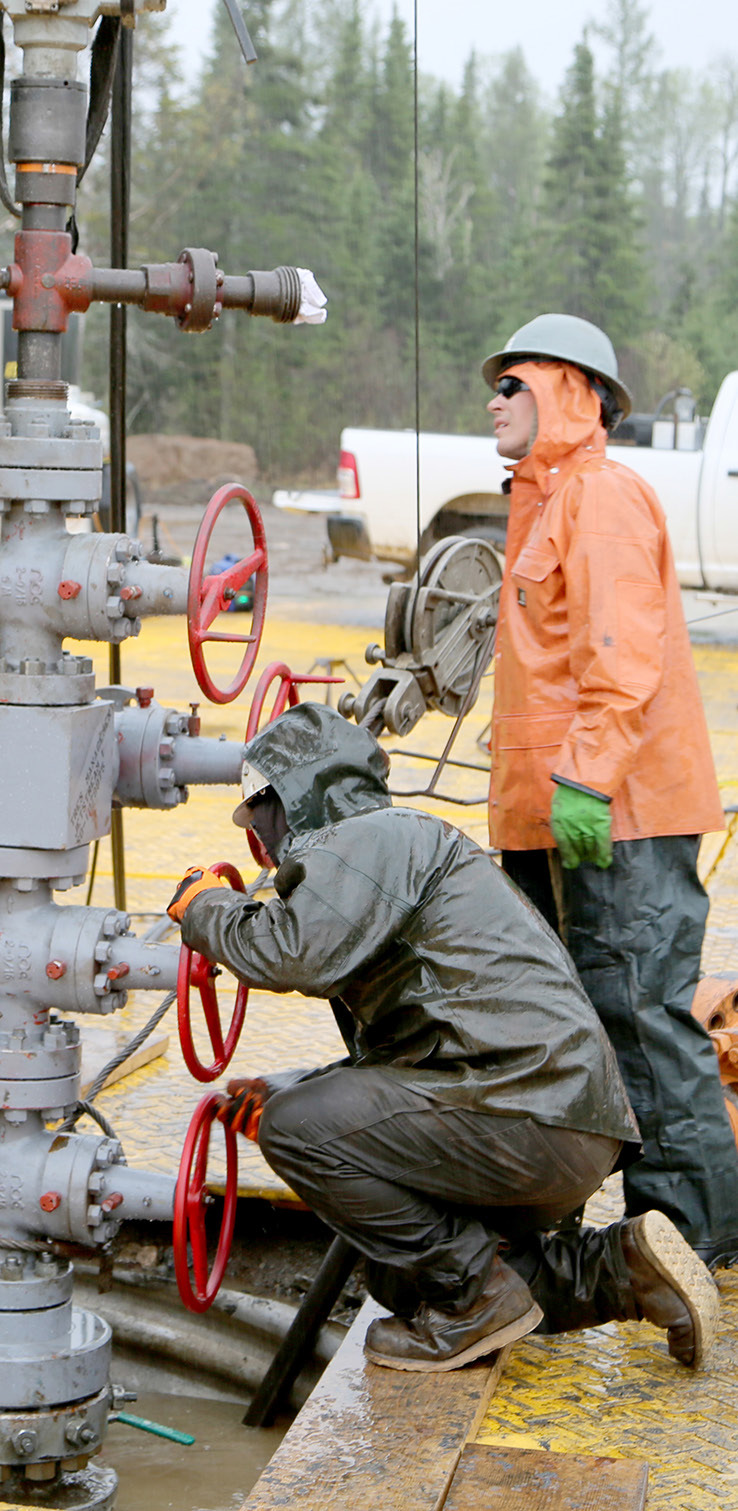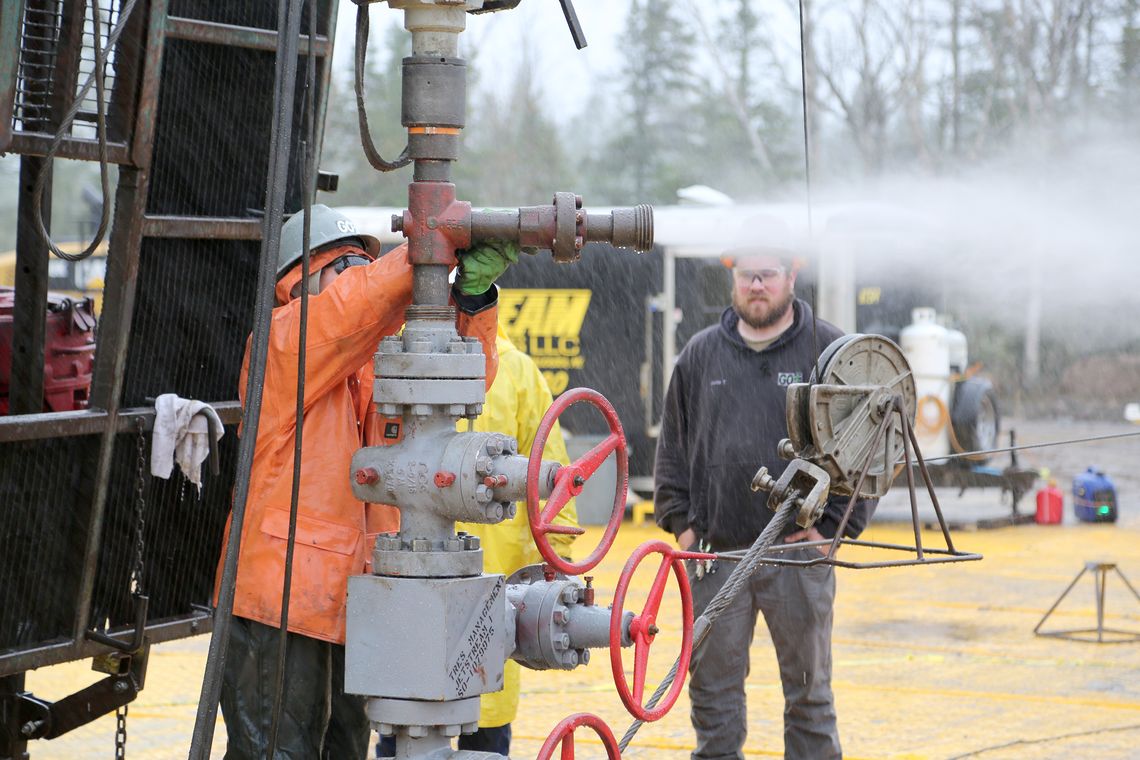Pulsar Helium held a media event on Tuesday at the company’s Jetstream well near Babbitt.
The well had been drilled this winter but the site had to be shut down when road restrictions went on. With the roads open, the company has been working on completing testing of the underground helium reserve.
Helium contents of up to 13.8% have been measured from one of the samples obtained at the 1,801 foot in-hole depth. That amount of helium concentration is one of the highest ever found.
Next up are tests to determine the flow of the gas from the well. When the original deposit was discovered, a company was drilling for copper and accidentally hit the gas pocket. The gas blew the piping out of the hole and roared for four days.
On Tuesday workers used special equipment to be able to break a ceramic disc that had been used to cap the well in February.
With a TV news crew from WCCO, newspaper reporters, investors and company officials on hand, a valve was opened around 6 p.m. A towel inserted in the opening flew out, followed by a jet engine type sound of the helium and other gases escaping.
“Yesterday’s venting procedure (raw gas under pressure) was the final step to prepare the well for the flow test. A bar was run down hole to break a ceramic isolation disc to allow communication between the reservoir zone and the wellhead. The short burst of pressure release is a standard procedure to confirm both the ceramic disc was penetrated and the well bore is live,” said Pulsar Helium spokesman Marc Farrington.
The company plans to continue testing to determine the pressure levels as well as the amount of helium underground. The pressure tests include three 12-hour sessions of the gases being released.
The data will help Pulsar Helium determine whether their drill pad near Babbitt is sitting on what many have said could be the largest helium reserve in the world. Whether or not the natural gas pocket will be economical to extract the helium is yet to be determined.
While work was going on Tuesday afternoon, Gov. Tim Waltz signed a bill that included language that will start the process of determining how helium can be extracted, specifically on state owned lands.
The legislation includes a new royalty framework for helium exploration, essential to allowing local communities and the state to capture the benefits from the recent helium deposit.
Pulsar has already lodged an application for new leases in areas of interest for helium and hydrogen.
Prior to the new regulations, leases could only be issued on mineral rights that are privately held, accordingly all of Pulsar’s existing leases are with private entities.
Permitting of helium production projects will be governed by a temporary regulatory framework prior to final rules being adopted.
By January 15, 2025, the Minnesota Department of Natural Resources commissioner must submit recommendations to the relevant legislative committees for statutory and policy changes to facilitate exploration and production of non-hydrocarbon gases (including helium) and support temporary permits for gas (including helium) exploration and production.
Pulsar president and chief executive officer Thomas Abraham-James said, “Minnesota is open for business, and we are grateful to the state for supporting this new industry. The new legislation gives Pulsar certainty moving forward, creating a clear regulatory pathway for us to take Topaz to production. As a result, we are now planning to accelerate our works at Topaz and expand our footprint in Minnesota.”


.jpg)










